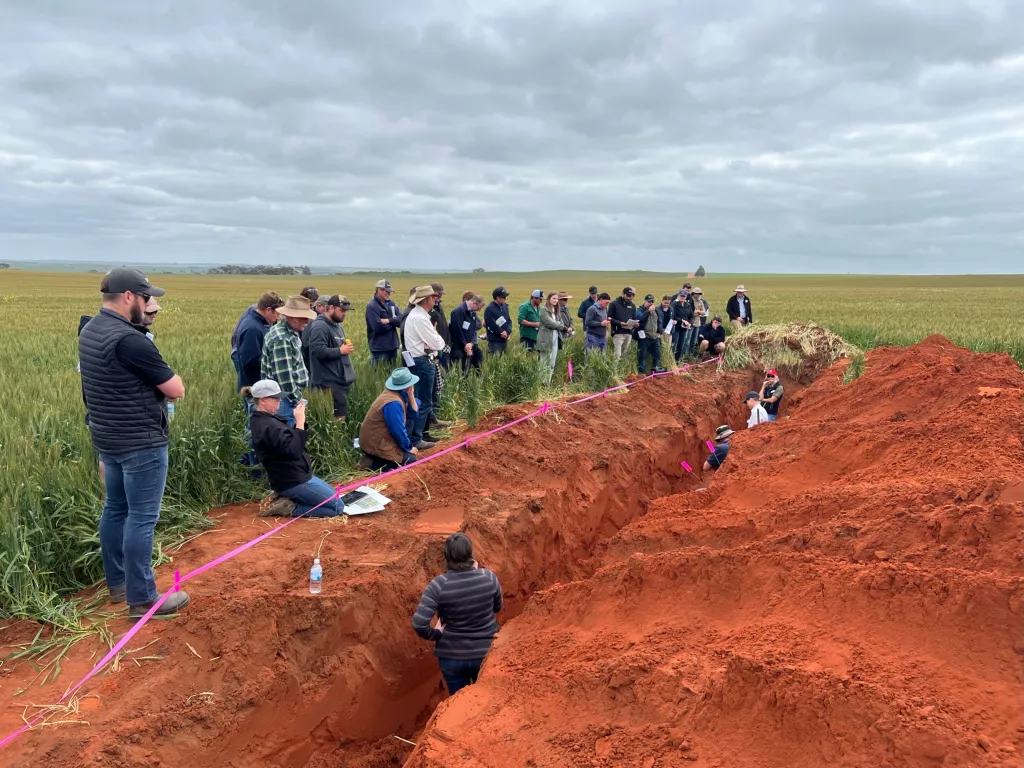Increasing engagement: Learning how farmers learn
By Nathan Craig, WMG Chief Executive Officer

In a deviation from the status quo of normal farming systems group focus, WMG has been investing over 20% of its resources to understand how best to engage farmers in delivering much needed innovation to ensure they have the tools required to be profitable and sustainable in the future. Read on to see what we have learned over the past two years.
The impetus for conducting this research has been the gradual decline in farmer attendance at key events such as our Seasonal Updates and Spring Field Day events which have typically been the large, book-end events for our organisation. Over the past 10 years, we have seen farmer attendance drop from 150 down to 60 at the Spring Field Day in 2023. Our aim was to understand the driving factors behind this change, and whether there was a simple or complex fix. Like everything in agriculture, the answer was not a simple yes or no, but that it depends.
WMG has been conducting a bi-annual survey of its members at its large events for the past 3 years which has helped to understand the local issues, opportunities, and ways that farmers choose to engage locally. A key insight that we have gained here is that farmers often learn from greater than seven sources of information when looking for new farming practices. This has helped to avoid a myopic view of what we do, in that WMG is just one of many sources of information that are available in the decision-making process. The question then arises of “What is our role in the information and extension ecosystem?” and “What information do we need to deliver and how?”
To learn more about the demographics of farmers across the region and their attitudes towards soil health (a long-term topic within WMG), WMG partnered with Dr Hanabeth Luke from Southern Cross University (SCU, NSW), the Liebe Group, WANTFA, and Wheatbelt NRM to survey the lower half of the Northern Agricultural Region of WA on a range of topics. This comprehensive survey confirmed many of our guesses for the attitudes towards managing soil health, including some of the drivers of adopting new practices for farmers, other than just profitability and productivity.
Our involvement in the Soil CRC, a national co-operative research centre focused on developing high performing soils, has allowed us to develop good working relationships with other farming systems groups across Australia. Through conversation, the issue of declining farmer attendance was something that we all came back to in discussion. A Soil CRC project led by Dr Hanabeth Luke (SCU) supported WMG and Central West Farming Systems (NSW), Birchip Cropping Group (Vic), Agricultural Innovation and Research – Eyre Peninsula (SA) farming systems groups to share our collective knowledge and experience on engaging farmers to come up with a ‘Knowledge Sharing Guide’ that will guide future farmer engagement. This document (available through the Soil CRC) explored successful engagement of farmers in field walks, soil pit days, social media, and discussion session type events and was a huge step forward in finding common ground in what works and what doesn’t.
There has been a fair bit of trial and error as well in this process. Through our regular project meetings, a pilot idea for a ‘pasture-drive’ event was hatched by the young, and at that time inexperienced WMG Team where we get farmers to stand in a paddock and talk about farming. The more experienced of the group suggested that there was a high chance of failure as there needs to be more structure and a guest speaker, but we progressed nonetheless and this has now become highly successful model and the preferred way that WMG engages with its members.
Through the delivery of many state-wide projects and collaborating with farming systems groups in WA, it became apparent to WMG that the style and quality of reporting of trial results was extremely variable. In thinking of the earlier finding that farmers learn from greater than 7 sources of information, it posed the question: whether farmers are unable to find all the information in one place to make an informed decision? A project that is just nearing completion is focused on improving the information presented to farmers from trials so they can make informed decision on whether or not to adopt new farming practices or technologies. Again, collaborating nationally with other farming systems groups and Charles Sturt University, a more comprehensive and standardised report format has been developed based on farmer survey and feedback during the project. The insights gained from this process have been pivotal in helping the WMG Team to understand what is really important to farmers, including that the cost of implementing a new practice or technology is now assessed not only on financial cost but on the time cost to the farmer to implement as well.
Through collaborating with universities and other farming systems groups across Australia, WMG has been able to increase its knowledge of effective farmer engagement and shape a new extension program that increases the engagement of our farming community across the region. This has helped the team to design better, more engaging projects for our farmers, understand what works and what doesn’t (and when), and significantly reduce the amount of useless information cluttering up our inboxes and social media feed. This research has been a significant step in understanding our role in supporting the sustainable growth of agriculture in the West Midlands region of WA and how we can better deliver value to our farming members.
WMG would like to acknowledge the support of the Soil CRC in funding many of these projects listed above and the collaboration of the many farming systems groups across Australia that have taken part in open and honest conversations that have allowed many of the key insights in the projects to be explored and built upon.













